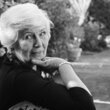Mr. Mac and me
(Book)
F FREUD
1 available
Copies
| Location | Call Number | Status |
|---|---|---|
| Shirlington - Adult Fiction | F FREUD | Available |
Description
It is 1914, and Thomas Maggs, son of the local publican, lives with his parents and sister in a village on the Suffolk coast. He is the youngest child, and the only son surviving. Life is quiet--shaped by the seasons, fishing and farming, the summer visitors, and the girls who come from the Highlands every year to gut and pack the herring. Then one day a mysterious Scotsman arrives. To Thomas he looks like a detective in his black cape and felted wool hat, puffing on his pipe like Sherlock Holmes. Mac is what the locals call him when they whisper about him. And whisper they do, for he sets off on his walks at unlikely hours and stops to examine the humblest flowers. He is seen on the beach, staring out across the waves as if he's searching for clues. But Mac isn't a detective, he's the architect Charles Rennie Mackintosh, and together with his artist wife, they soon become a source of fascination and wonder to Thomas. Yet just as Thomas and Mac's friendship begins to blossom, war with Germany is declared. The summer guests flee and are replaced by regiments of soldiers, and as the brutality of war weighs increasingly heavily on this coastal community, they become more suspicious of Mac and his curious ways. In this story of an unlikely friendship, Esther Freud paints a vivid portrait of the home front during World War I, and of a man who was one of the most brilliant and misunderstood artists of his generation.
More Details
Notes
Similar Titles From NoveList
Similar Authors From NoveList
Published Reviews
Booklist Review
It is 1914, and 14-year-old Thomas Maggs, the son of pub owners, is having a rough go of it. He's half-lame and sensitive about it; his father is an abusive drunk; and his poor ma is always worried about money. When a Scottish stranger named Mac shows up, dressed in a long black cape, Thomas is intrigued, especially when he espies Mac and his artist wife creating wonderful paintings, and he soon becomes friends with the couple. Mac is an expert on local flora and fauna and scours the island with his binoculars, looking for ideal specimens to paint, but when war threatens, the locals begin to suspect that he might be a spy. Freud has based this novel on the life of Scottish architect and artist Charles Rennie Mackintosh, a renegade ahead of his time. What Freud captures so exquisitely in this lovely, slow-paced tale is the way the rhythms of village life are so closely tied to the land and sea; whether the task is fishing for eels or growing herbs, the action and its setting are conveyed in lucent prose.--Wilkinson, Joanne Copyright 2010 Booklist
Publisher's Weekly Review
Freud (Hideous Kinky) adds her voice to the chorus marking the centenary of WWI with this novel inspired by an incident in the life of Glasgow architect Charles Rennie Mackintosh. It's 1914 when Thomas Maggs, a 12-year-old boy growing up in a small fishing village in Suffolk, befriends Mr. Mac, a newcomer, and his artist wife, Margaret. At first, Mr. Mac and his odd ways, such as painting the indigenous flowers, make him a prime source of speculation to the locals, who soon have other things on their minds as war is declared. Village boys go off to fight, soldiers are billeted in the village, and German zeppelins fly overhead on the way to bomb London. Because of German writing found in his letters, Mr. Mac is accused of being an enemy spy. But Thomas finds that the truth is quite different. The war informs every aspect of life in the fishing village, despite its distance from the battlefield, and Freud does an excellent job of describing its circadian rhythms with the incisive depth of a John Cowper Powys. But when it comes to drama, her novel is a little on the anemic side, as there isn't much of a mystery behind Mr. Mac's letter writing. In the end, what this novel does best is introduce the reader to the life of an unsung hero of architecture. (Jan.) © Copyright PWxyz, LLC. All rights reserved.
Library Journal Review
On the eve of World War I, in poor health and financially strapped, architect and designer Charles Rennie Mackintosh and his artist wife, Margaret, wash up in a seaside English village. The working-class townspeople regard them with curiosity and suspicion-they are foreigners (from Scotland!), artists (Bohemians!), have German books on their shelves (art catalogs), and roam the countryside with binoculars (the better to view their floral subjects). However, to young Thomas Maggs, son of the local innkeeper, they are exotic and enchanting. In their tidy cottage, he finds a welcome refuge from his schoolwork, his endless round of chores, and his angry, drunken father. Tom and his new friends observe the changing landscape when war breaks out as zeppelins fly overhead, soldiers are billeted in town, and local boys join up and die. VERDICT Along with popular fictional biographies such as Loving Frank, The Paris Wife, and Z, this period novel from Freud (Hideous Kinky; Lucky Break) will surely captivate. It may also inspire a visit to Glasgow for tea and scones in the Willow Tearooms, a Mackintosh architectural gem. Warmly recommended.-Barbara Love, formerly with Kingston Frontenac P.L., Ont. (c) Copyright 2014. Library Journals LLC, a wholly owned subsidiary of Media Source, Inc. No redistribution permitted.
Kirkus Book Review
For a teenage boy living on the coast of England in 1914, change is everywhere. Freud's (Lucky Break, 2011, etc.) evocative new novel intermingles the dawning consciousness of an imaginative, creative child, who meets a real artist, with the irreversible alteration brought to a small community by the start of World War I.The Suffolk coastal landscapeits history, weather, natural fabric and ever shifting aspectssuffuses Freud's delicately detailed chronicle of village life, in which sailing, fishing, shipwrecks and beachcombing are the stuff of local existence. Tom Maggs, 13 and born with a twisted foot, knows the terrain like the back of his hand and roams it freely. Tom has a taste for drawing, which is how he first encounters the dark figure of Mac, aka Charles Rennie Mackintosh, the noted Scottish architect and painter who, with his wife, also a renowned artist, is living locally, recuperating from illness after a career dive. Tom's father, an alcoholic, terrorizes his family while the Mackintoshes' loving companionship offers a different version of marriage. The couple also encourages Tom's sketching, and he becomes their mail boy, delivering their letters to the post office, after steaming them open to read the contents. Once war begins, soldiers constantly come and go, the town and beaches are fortified against invasion, and Zeppelins fly overhead, dropping bombs. Tom and those around him are increasingly affected by the new laws, the distant fighting, and the national mood of fear and suspicion. When crises arrive, they propel the boy forward into an unimaginable future in which he will always cherish the love and artistic devotion he witnessed during that shattering year. A touching coming-of-age story, powerfully but gracefully infused with a spirit of place, which also pays tribute to a revered artist. Copyright Kirkus Reviews, used with permission.
Booklist Reviews
It is 1914, and 14-year-old Thomas Maggs, the son of pub owners, is having a rough go of it. He's half-lame and sensitive about it; his father is an abusive drunk; and his poor ma is always worried about money. When a Scottish stranger named Mac shows up, dressed in a long black cape, Thomas is intrigued, especially when he espies Mac and his artist wife creating wonderful paintings, and he soon becomes friends with the couple. Mac is an expert on local flora and fauna and scours the island with his binoculars, looking for ideal specimens to paint, but when war threatens, the locals begin to suspect that he might be a spy. Freud has based this novel on the life of Scottish architect and artist Charles Rennie Mackintosh, a renegade ahead of his time. What Freud captures so exquisitely in this lovely, slow-paced tale is the way the rhythms of village life are so closely tied to the land and sea; whether the task is fishing for eels or growing herbs, the action and its setting are conveyed in lucent prose. Copyright 2014 Booklist Reviews.
Library Journal Reviews
On the eve of World War I, in poor health and financially strapped, architect and designer Charles Rennie Mackintosh and his artist wife, Margaret, wash up in a seaside English village. The working-class townspeople regard them with curiosity and suspicion—they are foreigners (from Scotland!), artists (Bohemians!), have German books on their shelves (art catalogs), and roam the countryside with binoculars (the better to view their floral subjects). However, to young Thomas Maggs, son of the local innkeeper, they are exotic and enchanting. In their tidy cottage, he finds a welcome refuge from his schoolwork, his endless round of chores, and his angry, drunken father. Tom and his new friends observe the changing landscape when war breaks out as zeppelins fly overhead, soldiers are billeted in town, and local boys join up and die. VERDICT Along with popular fictional biographies such as Loving Frank, The Paris Wife, and Z, this period novel from Freud (Hideous Kinky; Lucky Break) will surely captivate. It may also inspire a visit to Glasgow for tea and scones in the Willow Tearooms, a Mackintosh architectural gem. Warmly recommended.—Barbara Love, formerly with Kingston Frontenac P.L., Ont.
[Page 72]. (c) Copyright 2014. Library Journals LLC, a wholly owned subsidiary of Media Source, Inc. No redistribution permitted.Publishers Weekly Reviews
Freud (Hideous Kinky) adds her voice to the chorus marking the centenary of WWI with this novel inspired by an incident in the life of Glasgow architect Charles Rennie Mackintosh. It's 1914 when Thomas Maggs, a 12-year-old boy growing up in a small fishing village in Suffolk, befriends Mr. Mac, a newcomer, and his artist wife, Margaret. At first, Mr. Mac and his odd ways, such as painting the indigenous flowers, make him a prime source of speculation to the locals, who soon have other things on their minds as war is declared. Village boys go off to fight, soldiers are billeted in the village, and German zeppelins fly overhead on the way to bomb London. Because of German writing found in his letters, Mr. Mac is accused of being an enemy spy. But Thomas finds that the truth is quite different. The war informs every aspect of life in the fishing village, despite its distance from the battlefield, and Freud does an excellent job of describing its circadian rhythms with the incisive depth of a John Cowper Powys. But when it comes to drama, her novel is a little on the anemic side, as there isn't much of a mystery behind Mr. Mac's letter writing. In the end, what this novel does best is introduce the reader to the life of an unsung hero of architecture. (Jan.)
[Page ]. Copyright 2014 PWxyz LLCReviews from GoodReads
Citations
Freud, E. (2015). Mr. Mac and me (First U.S. edition.). Bloomsbury.
Chicago / Turabian - Author Date Citation, 17th Edition (style guide)Freud, Esther. 2015. Mr. Mac and Me. New York: Bloomsbury.
Chicago / Turabian - Humanities (Notes and Bibliography) Citation, 17th Edition (style guide)Freud, Esther. Mr. Mac and Me New York: Bloomsbury, 2015.
Harvard Citation (style guide)Freud, E. (2015). Mr. mac and me. First U.S. edn. New York: Bloomsbury.
MLA Citation, 9th Edition (style guide)Freud, Esther. Mr. Mac and Me First U.S. edition., Bloomsbury, 2015.
































